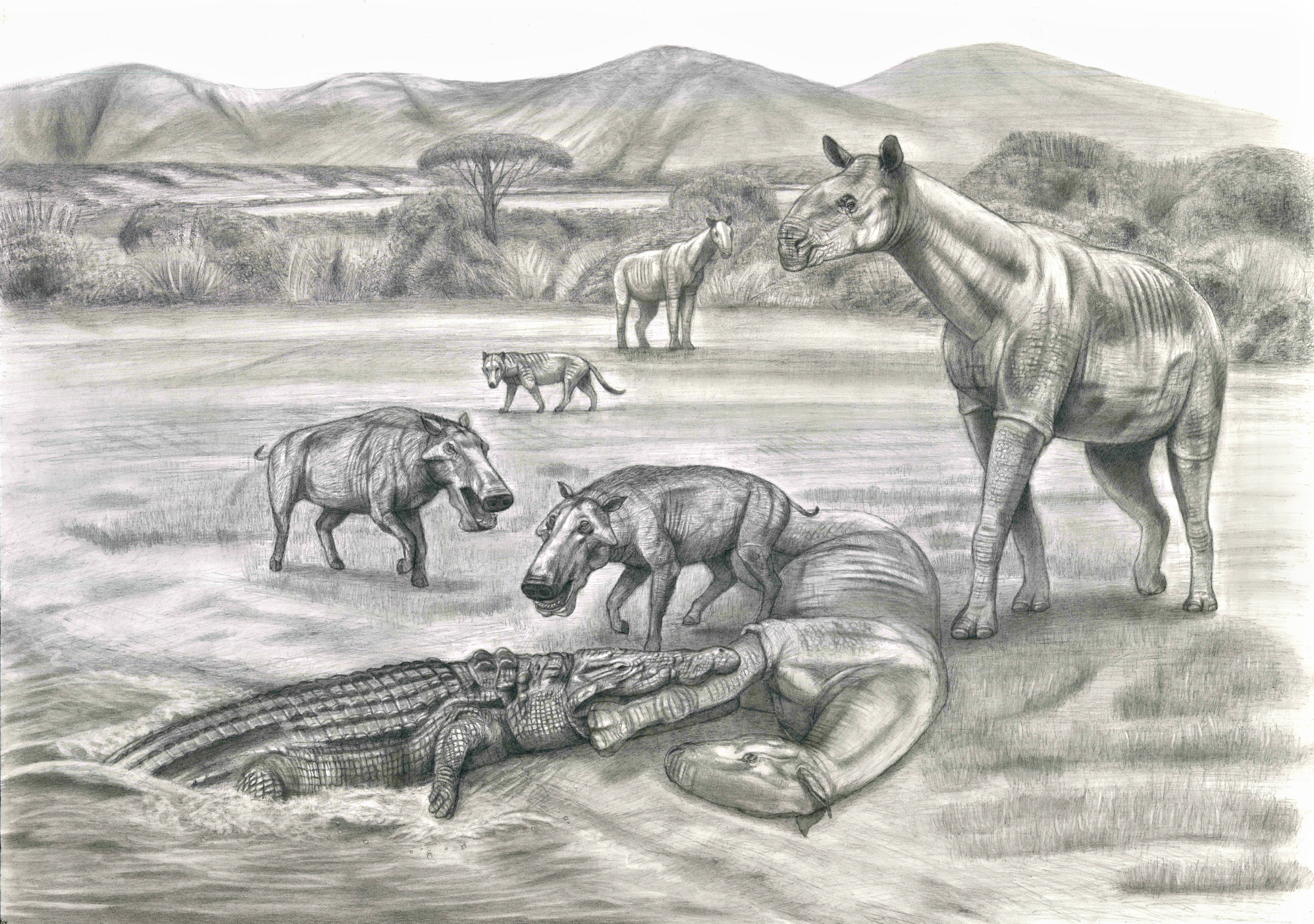Deviation Actions
Description
[The scene]
A carcass of Paraceratherium transouralicum which may have died of illness, is surrounded by a fellow Paraceratherium and two Paraentelodon species(the largest of Eurasian entelodonts which was almost identical to the North American Daeodon in size!) as well as a large hyper-carnivorous creodont, Hyaenodon weilini at some distance. Suddenly, they are all completely taken aback by an attack from the adjacent bugti river bed, by a monstrous crocodile...!
[Titan of titans]
The central regions of Asia in the Oligocene era produced arguably the largest terrestrial mammal of the entire Cenozoic, namely the species of the genus Paraceratherium.
Paraceratherium and other indricotherids were branched off from hornless, cursorial adapted primitive rhinos called hyracodonts and thus inherited similarly slender, elongated limb structures. Unlike most of hyracodont ancestors however, they evolved into titanic forms.
The largest species of the genus, Paraceratherium orgosensis could have reached the shoulder height in the flesh of around 4.8m and weighed 16.5 tons or so(Paul, 1997). This dimension ensures placing of Paraceratherium as the tallest terrestrial mammal of all time and only selective mega proboscideans of such genera as Mammuthus, Elephas, Palaeoloxodon and Deinotherium could rival the mega rhino in terms of weight.
[Immune to predation, or...?]
The list of contemporaries in the Oligocene central Asia included highly formidable hyper-carnivorous creodonts such as Hyaenodon and nightmarish scavenging 'pigs' entelodonts, but titanic scales of indricotherids allowed them to be virtually immune to any predation. In this regard, I guess that the retained cursorial morphology seen in indricotherids became unfunctional vestige of much smaller hyracodonts.
Only one entity however, which was not a fellow mammal member, could've been a predatory threat even for Paraceratherium : a gigantic, 10-11 m long ancient crocodile(Crocodylus bugtiensis) that's mentioned in Dr.Prothero's recent book focused on indricotherids. Was it really possible do you think for super crocs to attack indricotherids of 'almost any sizes' at the edge of river, as the author suggested and as being envisaged in this picture?
~ ⓒJagroar
Increíble arte, que bestias magníficas vivieron en esa época, nada que envidiarles a los dinosaurios 🐊


































